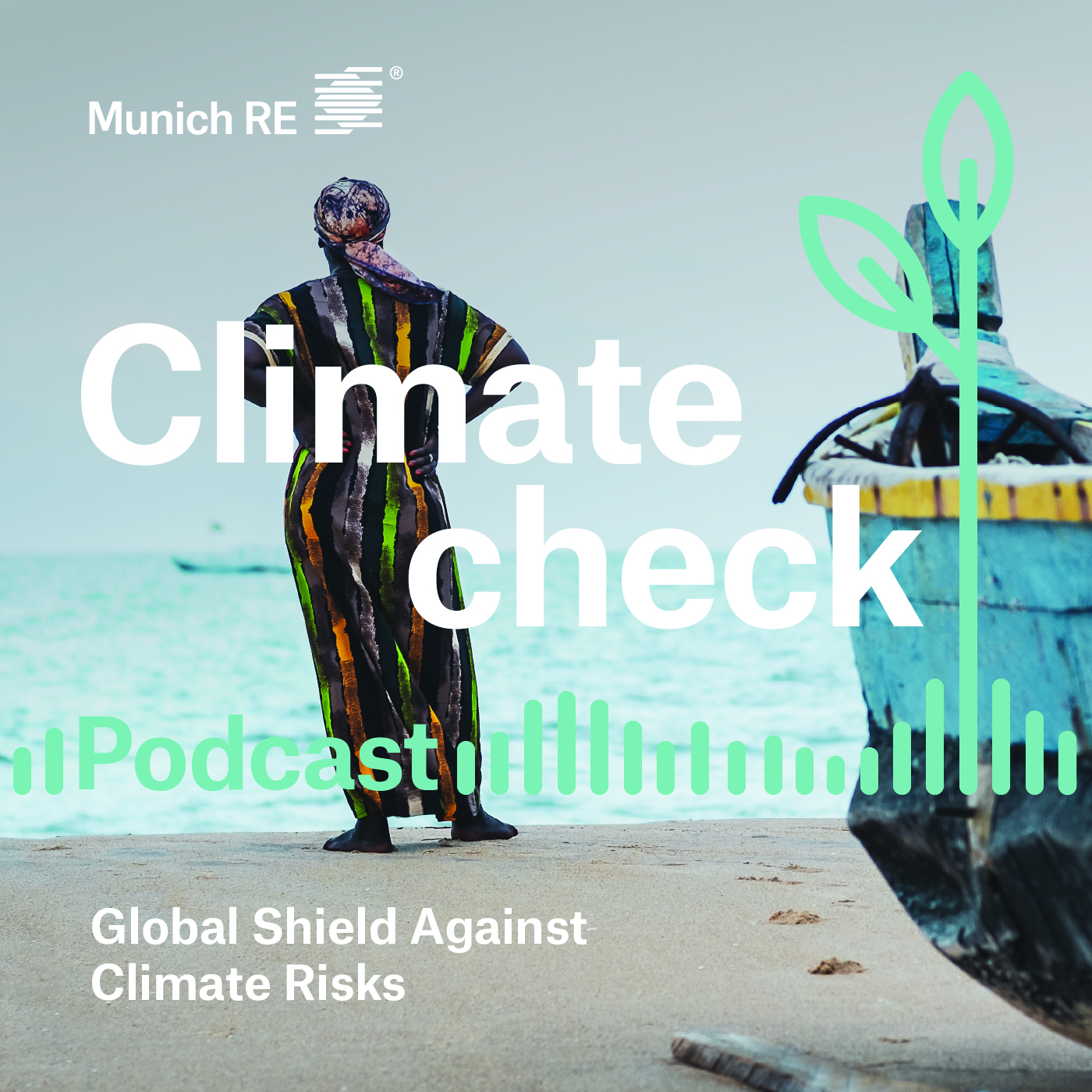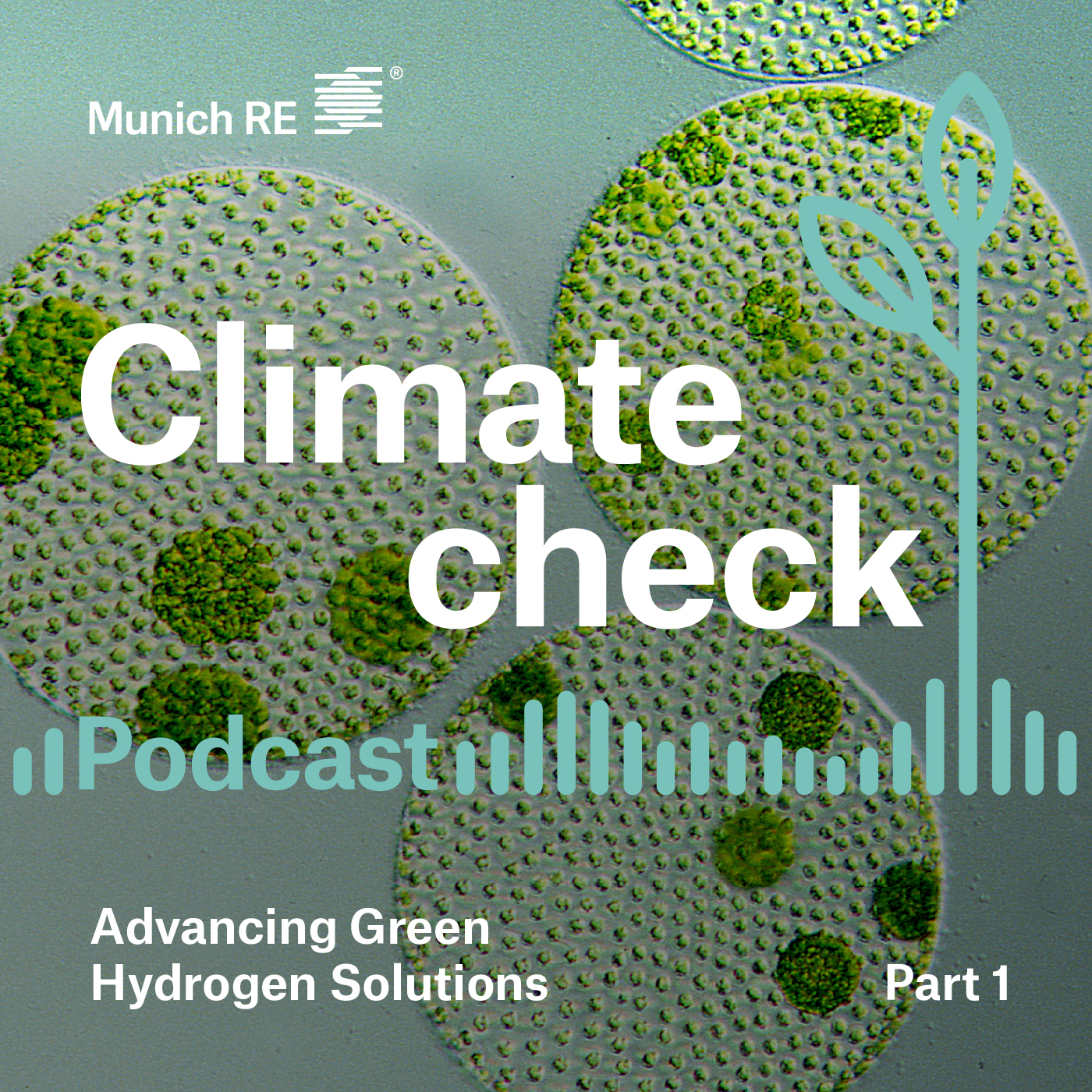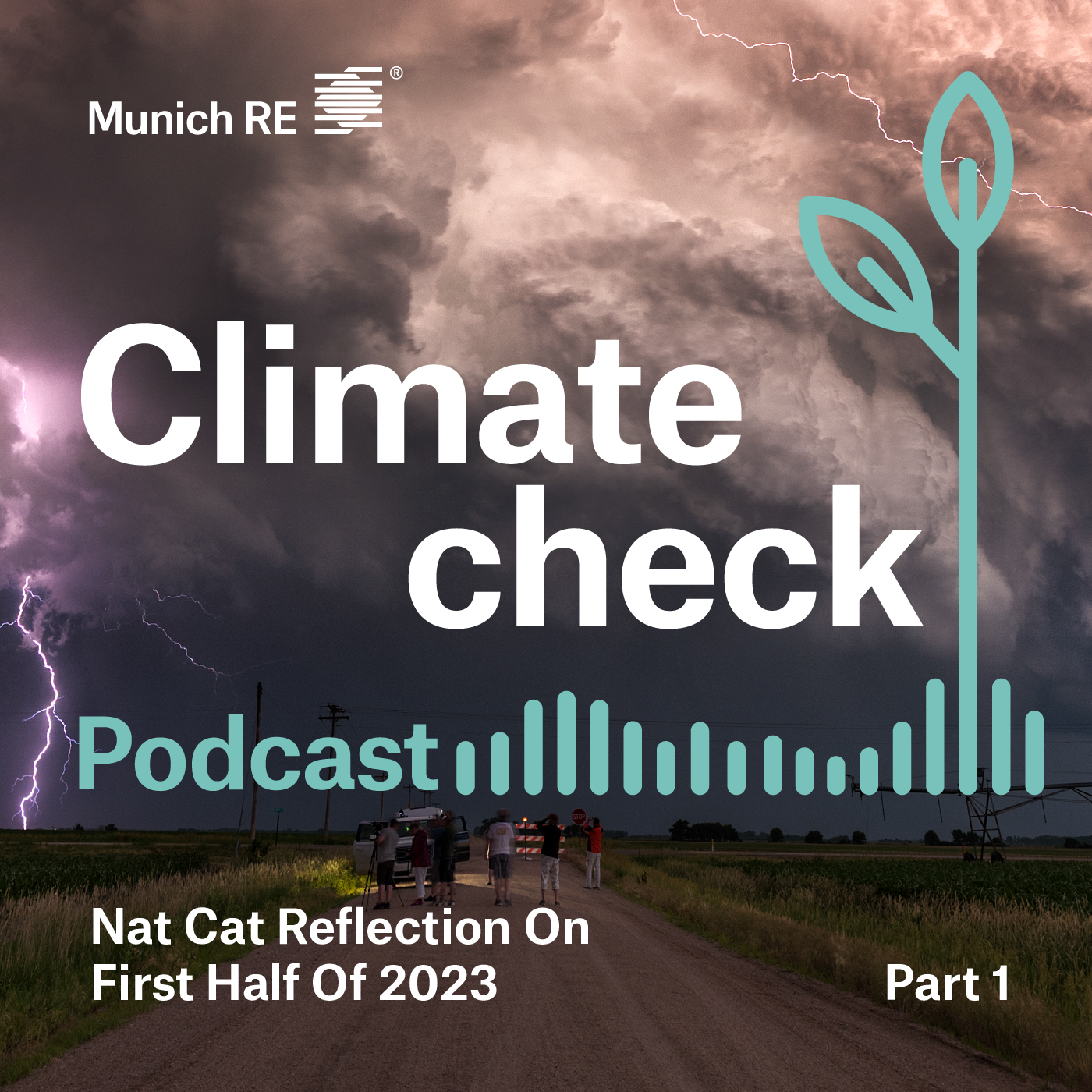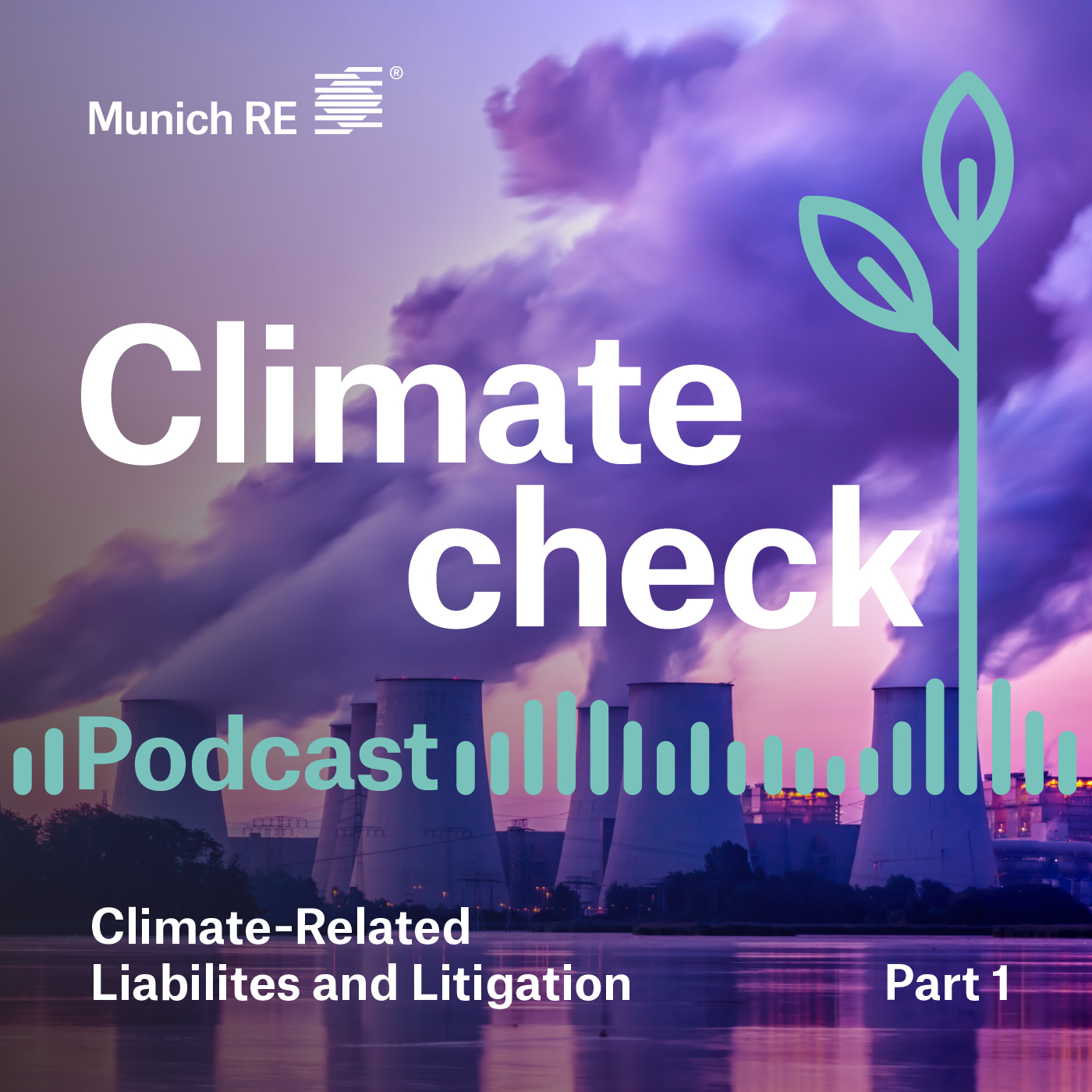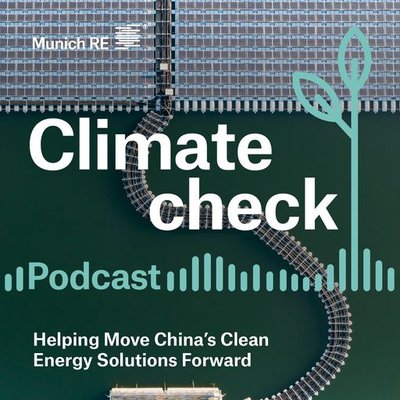Climate Check podcast
Munich Re experts share ideas on expanding climate resilience
Podcast series
properties.trackTitle
properties.trackSubtitle
Inspiring conversations about the intersection of climate change and risk solutions
The impacts of climate change are being felt in many parts of the world. But individuals and organizations are coming together to mitigate the risks of extreme weather in new, innovative, and inspiring ways.
Munich Re’s Climate Check podcast series explores brave and bold ways the insurance industry is expanding resilience in the face of climate change. From the expanding alternative fuel vehicle markets to veteran-led non profit that fortifies disaster-prone homes, Climate Check shows how insurers are advancing meaningful climate solutions.
Climate Check is hosted by Mark Maroon, Vice President of Portfolio Management for American Modern, a Munich Re company.
Listen and subscribe on: Spotify | Apple Podcasts
Episodes
How homeowners can reduce wildfire risk: Part 1 & 2
Alister Watt, Chief Product Officer at the Insurance Institute for Business & Home Safety (IBHS), shares how the insurance industry and IBHS are partnering to provide homeowners with a meaningful path to greater wildfire resilience... Read more
Catastrophe modeling and resilience in Africa
Walter Voigts-von Forster, Head of Property and Casualty Insurance for Africa, discusses how investments in natural catastrophe modeling and innovative risk solutions can help bridge the protection gap in Africa... Read more
Tracking preparedness for global climate risks
Tim Brockett, Executive Vice President and Head of Specialty Lines, Innovation, and Strategic Products within the Reinsurance Division at Munich Re, provides an overview and analysis of the Climate Risk Preparedness Survey among organizations around the... Read more
Report: NatCat losses in the first half of 2024
Ernst Rauch, Chief Climate Scientist at Munich Re, provides an overview of the losses from natural catastrophes during the first half of 2024... Read more
Wildfire's rising risks and expected losses
Tobias Grimm, Head of Climate Advisory and Natural Catastrophe Data at Munich Re, explains the factors that contributed to a devastating wildfire season in 2023 and favor additional losses in 2024... Read more
Risk and resilience in the upcoming hurricane season: Part 1 & 2
Mark Bove, Meteorologist and Senior Vice President of Natural Catastrophe Solutions for Munich Re Insurance America, discusses how communities around the world have fared during recent hurricanes and offers insights about the upcoming... Read more
Location risk intelligence
Thomas Walter, Product Marketing Manager for Risk Management Partners, explains how Location Risk Intelligence reveals climate-related portfolio risk—helping insurers and other financial institutions remain sustainable resources for the organizations that rely on them... Read more
Global shield against climate risk
Head of Global Sales & Distribution and Senior Manager of Public Sector Business Development, delve into COP28: its structure, the major players, and key developments like climate resilience initiative Global Shield.... Read more
Closing the protection gap in the MENA region: Part 1 & 2
Andreas Pollmann, client management executive and head of department for the Middle East and North Africa region, discusses the perils the region has to face and the steps being taken to mitigate the risks (Part 1), followed by a discussion on how... Read more
Green hydrogen: Part 1 & 2
Stefan Riedel, chief underwriting officer for Property and Specialty Insurance at Munich Re, discusses the potential green hydrogen brings to governments and various industries (Part 1), followed by a discussion on how insurers can be supportive to make... Read more
Natcat Half Year 2023: Part 1 & 2
Ernst Rauch, chief climate and geoscientist at Munich Re and Mark Bove, meteorologist and senior vice president of Natural Catastrophe Solutions at Munich Re US, discuss global natural disaster losses and strategies to adapt and mitigate risk (Part 1), followed... Read more
Climate-related liabilities and litigation: Part 1 & 2
Lucas Beckmann, chief casualty underwriting officer at Munich Re, discusses climate-related liabilities and litigation, and how they arise (Part 1), followed by the actions Munich Re takes to mitigate CO2 risks (Part 2)... Read more
Helping move China's clean energy solutions forward
Belhassen Tonat, general manager for Munich Re's non-life solutions in Greater China, shares how China's energy transformation is being supported by reinsurers' offering of performance guarantees and other enabling risk solutions....
Read more
Supporting carbon storage in China
Benny Zhou, head of the agriculture and actuarial department for Munich Re Greater China, discusses how reinsurance can support farmers participating in a program that preserves grasslands...
Read more
High Risk Regions and the Importance of Resilience: Part 1 & 2
Haruka Narahashi, head of Treaty Reinsurance for Munich Re Japan, talks about the evolving risk of natural catastrophes that Japanese communities face. Learn more about how... Read more
New green tech world: Part 1 & 2
Michael Schrempp, head of Green Tech Solutions at Munich Re, discusses how insurers can bolster advancements in green technology. Learn more about how... Read more
Helping underserved communities: Part 1 & 2
Jason Dunn, senior vice president for strategic products at Munich Re, along with Team Rubicon's Brandon Callahan and Ana Luna, discuss how the nonprofit disaster response organization deploys military veterans to communities affected by natural catastrophes and other crises. Learn more about how... Read more
Flood insurance and the insurance gap: Part 1 & 2
Raghuveer Vinukollu, Head of Climate Insights and Advisory in the US, talks about the range of solutions to mitigate the risk of flooding. Learn more about how... Read more
Increased risk of natural disasters: Part 1 & 2
Ernst Rauch, chief climate and geo scientist at Munich Re, and Mark Bove, Munich Re America’s senior vice president of natural catastrophe solutions, address the value of data in mitigating the risks of climate change. Learn more about how... Read more
Managing physical climate risk: Part 1 & 2
Chris Gottardo, head of business development, global banks, and asset managers for climate change solutions at Munich Re, explains how financial institutions can mitigate the risks of catastrophic climate events. Learn more about how... Read more
Munich Re's climate ambition: Part 1, 2, & 3
Dr. Michael Menhart, global chief economist for the Munich Re Group, discusses the types of asset-driven commitments insurers can make to mitigate the impact of climate change. Learn more about how... Read more







